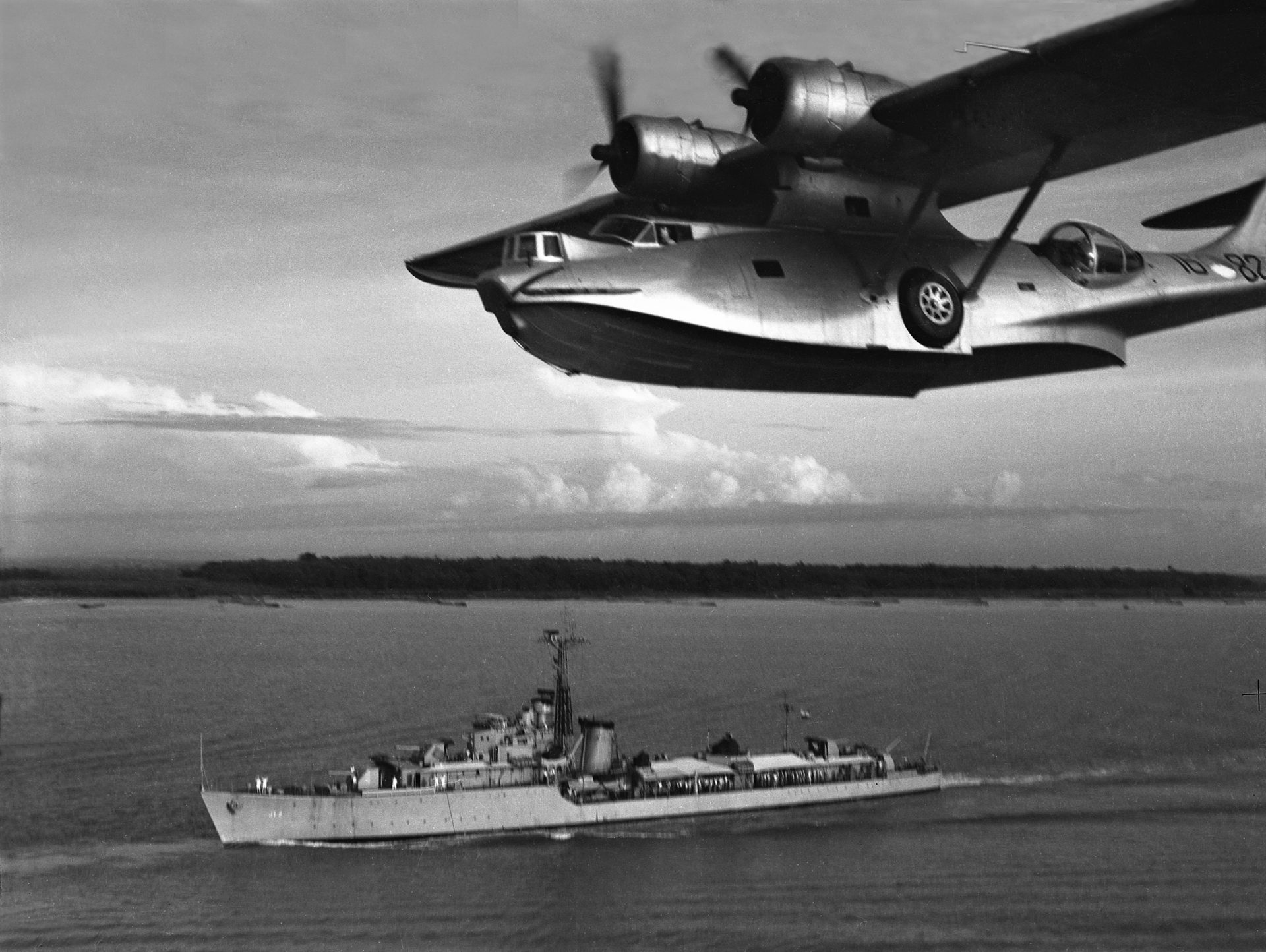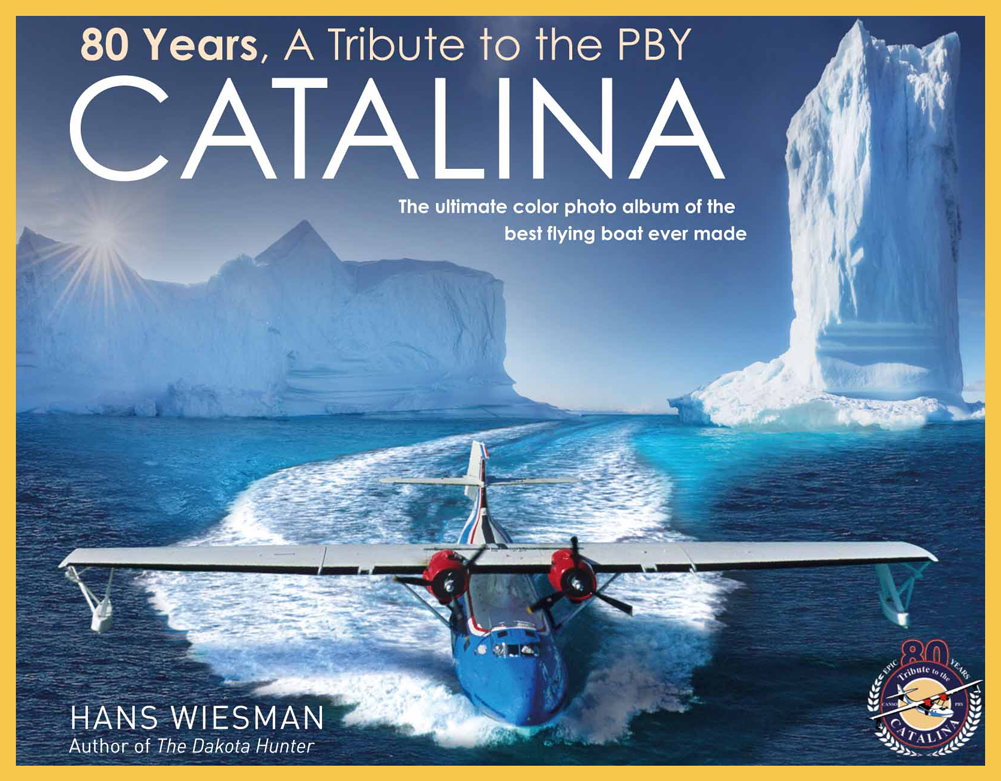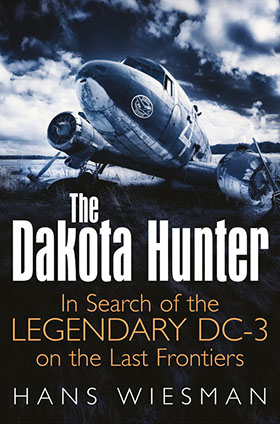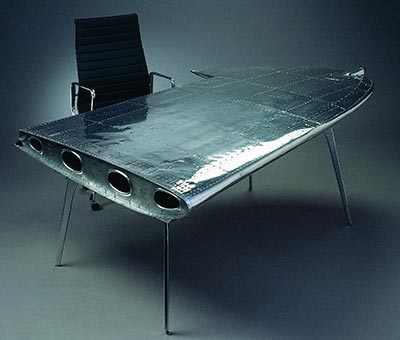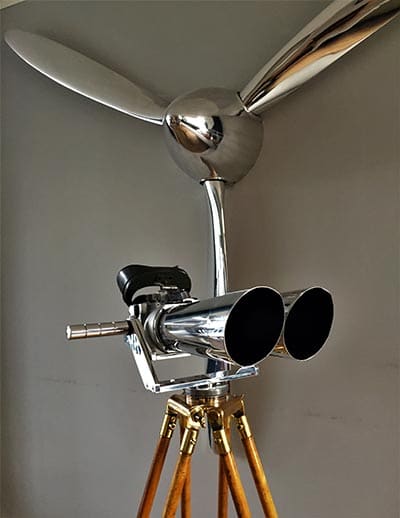In this Dakota Hunter Blog, you can read about the spectacular Military career of the Consolidated PBY Catalina in the SE Pacific from 1942 until the late-1950s. The aircraft entered service with the USAAF, the US Navy, the RAAF, the RNZAF and the Dutch MLD (Militaire Luchtvaart Dienst) in what now is Indonesia. The Cat was so well designed for connecting the thousands of Islands that its Military service did not end by September 1945 with the capitulation of Japan. The amphibian soldiered on for another decade and longer, in Indonesia, Taiwan, China, and the Phillippines both with the Military, the CIA and with civil operators. Read about that rather unknown episode in the history of the iconic Catalina in this Blog post. (For the full story with more information and 400 photographs, see my new book).
Feature Photo depicts a Dutch MLD PBY-5A Catalina that got engaged in the post-war Guerilla conflict with Indonesian infiltrations in Dutch New Guinea in the 1950s. In a combined effort with the Dutch Navy, they tracked the enemy PT boats and Aircraft that dropped Special Forces/ Commandos in the Jungle in the hope to mobilize the Papua tribes to fight with them against the Dutch Colonial Power. That was over-optimistic, many of the infiltrators were caught by the tribal hunters and handed over to the Dutch Forces. Allegedly, some ended in the big Pot in order to resolve the tribe’s shortage in food. On the Photo: the MLD Catalina flies here over the Dutch Navy Destroyer “Evertsen” in their successful military operations but the battle over New Guinea was lost in 1962 on the Political Front. ( Photo Collection Brons, via Prudent Staal)
Above is a most intriguing photo of a RAAF “Black Cat” Catalina PBY-5 during wartime ops in Papua/ New Guinea in 1944/45. The pic gives a perfect impression of what happened in many jungle-covered islands of the SW Pacific. You see the ammo boxes, fuel cans, food, and tarps to cover the cockpit, loaded aboard with the help of the local tribesmen. It perfectly reflects the versatility of the Catalina, that could penetrate, at night, deep into the Japanese held territory. They attacked Jap harbors, ships, submarines, oil-tanker depots and dropped mines for hampering enemy shipping lines. Only the Catalina could operate from such primitive ground facilities often set up at remote hide-outs on rivers or in lagoons, and stealthily supplied by submarines or PT Boats. Striking at night, as rogue sharks from the deep of the ocean, the Japanese hardly found an answer to the surprise night attacks of the Black Cats, both operated by the USAAF and the RAAF. Early in the war, they attacked the Solomon Islands, later they attacked the Borneo Oil Industry and Harbours (Balikpapan and Tarakan) and by war’s end, they flew out to the Philippines and beyond. (All Photos and stories are taken from my book “80 Years, a tribute to the PBY Catalina”)
Above is another stunning photo of a late Model RAAF Black Cat with a huge radome in between the engines. Two mechanics are working on the fine-tuning of the nr.1 engine while sitting on their folding scaffolds! A windy and noisy job out there in the full prop-wash. The dropping of tools or spares was not allowed! The man in the waist blister waits with a net to catch the wrench jocks in case they would drop off.
The Royal New Zealand Air Force operated in the SW Pacific War theater a mixed fleet of Consolidated and Boeing of Canada built Catalinas, both during and after WWII. The sharp photo depicts the 6 Sqn. RNZAF Catalinas, taken at Halavo Bay, Solomon Islands (Photo via David Legg)
The photo above is a rare picture from the “Australians at War Film Archive”. It depicts a PBY-5A that landed on the Balikpapan Airstrip. That strip was heavily bombed by the USAAF and after it was taken by the Australian troops, it first needed a repair job in July 1945. It was the conclusion of the Operation OBOE II, the conquering of the Eastern Borneo Oil installations and Port facilities that cut off the Japanese Navy from their principal oil supply. While the Imperial Navy got entangled in the Naval Battles around the Philippines, their lifeline for fuel dried up for their ships and their aircraft. The sun went down a bit earlier in the “Empire of the Sun” after this loss.
This is another rare photo, taken on Balikpapan Beach, some 5 years before I arrived as a young kid in Borneo and later played on that same beach. The Australian Soldiers had a chill time in August 1945, playing on the beach with a captured Japanese Tankette Type 92. In the backdrop, you’ ll notice a stripped Catalina that was beached during the Invasion operations of Balikpapan in July 1945 and was there to stay for quite a couple of years.
Read the full story of that assault in my book: The enemy soldiers were not evacuated, most were killed by flamethrowers in their bunkers, a couple of them surrendered and many fled into the Jungle. They made a fatal mistake, as the headhunting Dayak tribes were allowed by the American/ Dutch Military after the invasion of Borneo in 1942 to go hunt and kill any Jap soldier with their blowpipes and venomous darts. The result of this promotion from a headhunting Killer gang to official Guerrilla force was devastating for the Japanese forces and for many a straggler, there started a harrowing episode in the wake of the Pacific War, taking place in the dark jungle of Borneo, far into the 1950’s! Rarely told, a staggering killer tale whereby the superior Jap guns came to no avail, they were hunted there by an invisible foe that stealthily followed them for weeks. Even in 1953, we saw Japanese stragglers coming out of the Jungle, they had food galore to shoot, but every shot attracted the Dayaks from miles around for an ‘inverted’ manhunt that slowly decimated their ranks.
After the war, KLM and Shell took over a number of the PBY-5A’s from USAAF inventories and continued the Catalina flight operations over the Indonesian Archipelago. In 1946, Shell came back for the repair and extension of the oil exploration in Borneo and New Guinea. With my Dad & family, we came in 1950 from the West Indies (Trinidad and Curacao) by ship to Java for my father’s new post in the Borneo Jungle oil exploration.
We flew over to Borneo in a DC-3 and in early 1952, a Shell-operated Catalina dropped us on a remote side river of the Mahakam River. I vividly remember the plane’s mooring, the muddy river banks, infested with crocodiles and the omnipresent steaming Jungle. Not everyone’s liking but for me, it was a like a paradise. In 1950, the KLM Catalinas were transferred to Garuda and I remember watching the Catalinas coming in for a water landing. Always a delight to see, how the aircraft came overhead in a very low fly pass to clear the river from small boats and check for debris in the water (mostly tree trunks). In a majestic orbit, she lined up for a water landing and I stood there watching in awe as a 6-year-old boy, totally mesmerized by the spectacle of the splashing water and the ensuing mooring nearby the muddy river bank. It was our only Lifeline with the Faraway Big World and the Cat brought us the mail and presents from our Family. That was the beginning of a Lifetime passion for the aircraft and it culminated years later in 1993 and 1994 in the ‘Flight of a Lifetime’ for a TV series, named the Catalina Odyssey that took me twice over the Atlantic to fly for some 2 x 6 weeks over Europe, Africa, and the Americas.
With all my Cat flights, adventure stories, and photos that I gathered in my life, the making of a unique photo album about my Passion was just a matter of time. It is out now and you can order the book at Amazon USA/UK or directly via my order page at www.catalinabook.com
You can also order at my printer Seattle Book Company, the order page where you can order with a 20 % discount.
If you prefer or you have a Prime membership, you can also order at Amazon https://www.amazon.com/80-years-tribute-PBY-Catalina/dp/908281000X
Read the Customer Reviews first, see the 15 random pages, and from there you decide. This book is the best Christmas Gift for your ( Grand-) Dad, your family, friend or yourself. See what Gene Tucker wrote me 5 days ago:
Gene Tucker Hans, without a doubt in my mind, your Catalina book is the best single book on any aircraft that I’ve ever found. It was delivered within a week of placing the order, so a special thanks to Seattle Book Company as well.
If you like Vintage Aviation in general and/or the PBY Catalina / Canso has your interest, this book gives you the complete story in 400 fabulous photos and 50.000 words. The Pilot stories, the (pre-)wartime development and its weapons, the Postwar career with the Coast Guard, as a Firefighter and as a Cargo/ Pax transport, it is all in my book, including the 100+ Catalina Odyssey photos and all the New Age survivors, photographed by professionals. The bygone days of the Flying Boat in all its Glory, it is here in this Lounge Table book on a Landscape format with many XL photos, many never published before!
See more of my Books and Blogs at www.dc3dakotahunter.com
Gene Tucker Hans, without a doubt in my mind, your Catalina book is the best single book on any aircraft that I’ve ever found. It was delivered within a week of placing the order, so a special thanks to Seattle Book Company as well.

